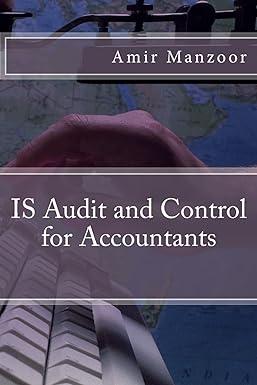Question
1. Which of the following is correct? A. All capital budgeting methods produce the same decision and their use is based on the information available.
1. Which of the following is correct?
A. All capital budgeting methods produce the same decision and their use is based on the information available.
B. Payback period ignores the cash flows after the original investment is recovered.
C. The accounting rate of return method considers the time value of money.
D. The cost of capital is the companys desired rate of return.
2. Which of the following capital budgeting methods uses accrual accounting rather than net cash flows, as a basis for calculations?
A. Payback method
B. Internal rate of return
C. Net present value
D. Accounting rate of return
3. Which of the following may be useful when comparing potential investments of different sizes?
A. Accounting rate of return
B. Profitability index
C. Future value of net cash inflows
D. Payback method
4. The internal rate of return is:
A. the interest rate at which the net present value of the investment equals the cost of the investment.
B. the interest rate at which the net present value of the investment exceeds the companys desired rate of return.
C. equal to the accounting rate of return.
D. none of the above
5. Which of the following capital budgeting methods ignores the time value of money?
A. Accounting rate of return
B. Internal rate of return
C. Net present value
D. Profitability index
6. Eagle Corporation is considering the purchase of a new machine. The machine cost $550,000 and will generate an annual net cash inflow of $100,000. What is the payback period?
A. 4 years and 6 months
B. 5 years
C. 5 years and 6 months
D. 6 years and 1 month
7. Cardinal Company purchased a new machine for $125,000. The machine will last eight years and will be depreciated using the straight-line method. The estimated residual value of the machine is zero and should generate a yearly cash inflow of $30,000. Ignoring taxes, what is the accounting rate of return?
A. 3.65%
B. 11.50%
C. 23.00%
D. 24.00%
8. Which of the following decision rules is a correct statement?
A. If the net present value is positive, do not invest in the capital asset.
B. If the internal rate of return is less than the required rate of return, invest in the asset.
C. Investments with longer payback periods are more desirable, all else being equal.
D. If the net present value is positive, invest in the capital asset.
9. Which of the following is NOT a factor when considering the time value of money?
A. The interest rate
B. The principal amount
C. The payback period
D. The number of periods
10. The final step in the capital budgeting process is to:
A. identify potential capital investments.
B. engage in capital rationing, if necessary, to choose among alternative investments.
C. utilize decision rules when screening out undesirable investments.
D. perform post-audits after making capital investments.
Step by Step Solution
There are 3 Steps involved in it
Step: 1

Get Instant Access to Expert-Tailored Solutions
See step-by-step solutions with expert insights and AI powered tools for academic success
Step: 2

Step: 3

Ace Your Homework with AI
Get the answers you need in no time with our AI-driven, step-by-step assistance
Get Started


